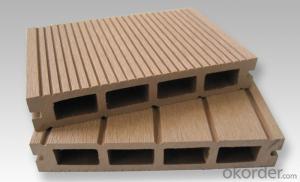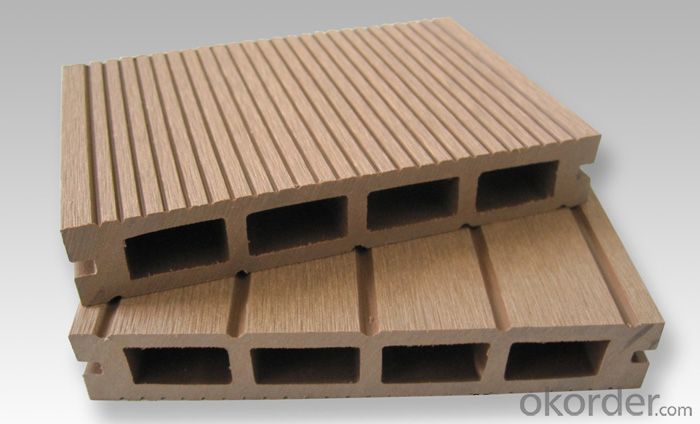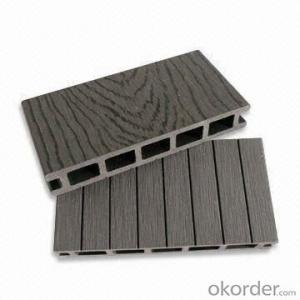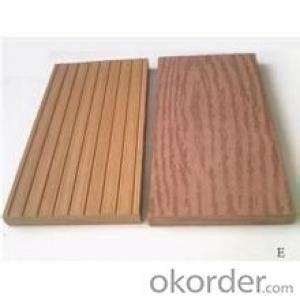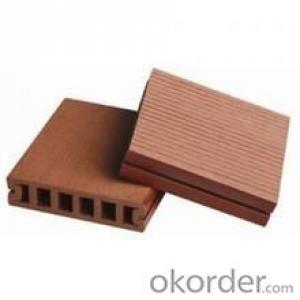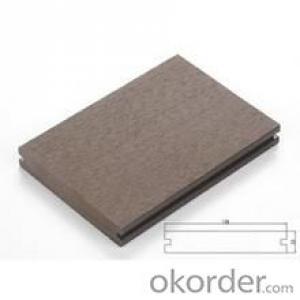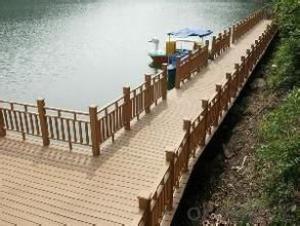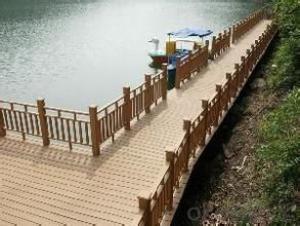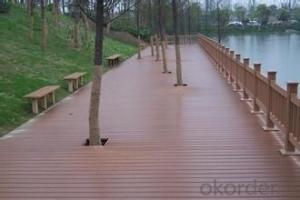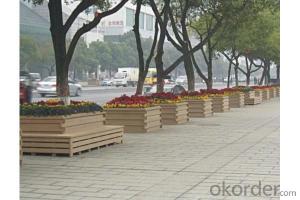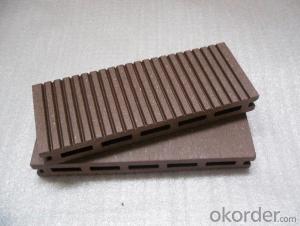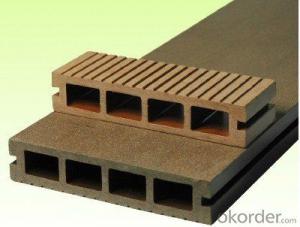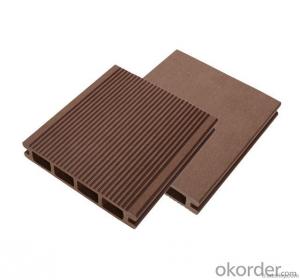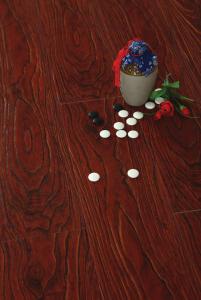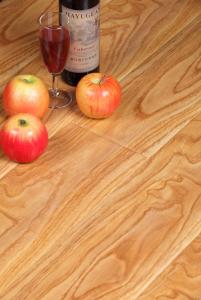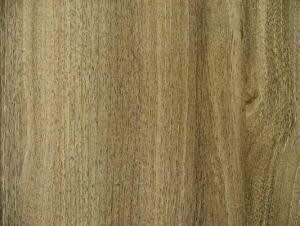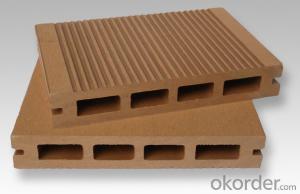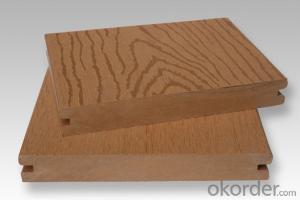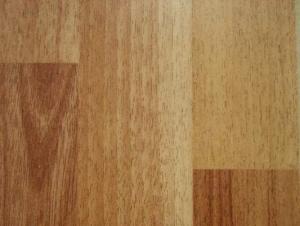fire and water resistent wooden wall paneling wpc wall cladding
- Loading Port:
- China Main Port
- Payment Terms:
- TT OR LC
- Min Order Qty:
- -
- Supply Capability:
- -
OKorder Service Pledge
OKorder Financial Service
You Might Also Like
Quick Details
| Type: | Engineered Flooring | Place of Origin: | Zhejiang China (Mainland) | Brand Name: | CMAX |
| Model Number: | CMAX | Technics: | Wood-Plastic Composite Flooring | color: | Coffer,black,brown,wood,tea,white,customized. |
| feature: | anti-slip surface,low maintance cost | width: | 140mm | thickness(height): | 30mm |
| surface grooves: | narrow grooves,wider grooves | surface treatment: | Sanding,Embossed,Scratched |
Packaging & Delivery
| Packaging Detail: | Packaging: wrapped with PE plastic film and on wooden pallet Size(mm). |
| Delivery Detail: | 7-12days after order confirmed |
Specifications
1.Natural & Beautiful wood look 2.Easy install & clear,low maintance cost 3.No trip hazards,recyclable
China waterproof Anti moth ANTI-UV dedicated composite wood boards
Product pictures:
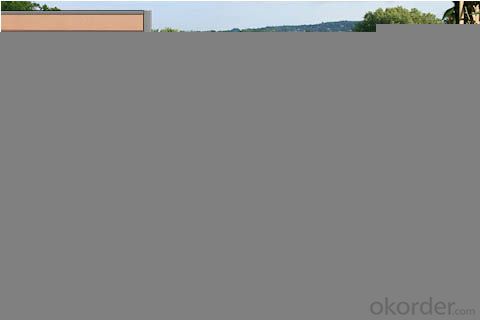
Product information:
Material | Wood Plastic Composite |
Ingredients | 30% HDPE+60% Waste Wood Fibers+10% Auxiliaries |
Colors Available | Coffer,black,brown,wood,tea,white,customized. |
Bottom | PE plastic Base |
DIY Snap Interlock Puzzle Tile | Easy for Installation |
Applications | Patio, Balcony,Terrance,Walkway,Boardway Decking,Pool Decking,Sauna Room & other Public Areas |
certificiate | CE. SGS .INTERNEK .ISO9001 .ISO14001
|
product features:
1.Natural & Beautiful wood look 2.Easy install & clear,low maintance cost
3.No trip hazards,recyclable 4.Long lifespan & UV stable,No wrapping,No rotting
5.Great drainage 6.Eco-friendly,anti-slip surface
*Easy cleaning and maintenance :No need of a specific treatment .just a usual water washing is necessary
*Safety:Splinters free and slip resistant Free of any toxic product
*Colours may slightly change,photos are not not contractual
*Resistant to scratches as oak resistance
*Very low colour variations
- Q: I saw a lot of things on the wooden floor of the wall, especially such things, I really do not know how to build, I hope you advise more
- First nail the wood keel on the wall, and then use the floor nail a nail on the line! Nail the nails in the joints of each board, nail a finished, and then on a, so just to cover the nail cap!
- Q: Will laying one layer over another be bad? I'm worried that the flue from the previous flooring will make the floor uneven. Thoughts or advice?
- IF the glue from the 1st is very good, and the floor is in good shape(you just don't like it). It may work, but more often than not it will give the second floor too much flex and it will phuquer up on you. It is always best to start off with a clean slate for flooring. If you are going to take the time to change to change it out, take the time to do it right.
- Q: whats the easiest way to get it off the floor . been there since like 1984??????????
- I think your flooring, if from the 1980's, is probably linoleum. It can be tough to remove, as I just had to do this in my kitchen within the past year. ? Use a hammer and a wide chisel for small areas where it is really glued down tight. It's slow but works. Be sure to set the angled part of the chisel against the floor so that you don't end up driving the chisel into the wood sub-floor. ? In larger areas, a heat gun works great to loosen up the old glue and scrape up the remnants. They are pretty inexpensive and usually come with a chisel type attachment for removing linoleum. Good luck.
- Q: Explain how the Earth’s magnetic reversals provide evidence of sea floor spreading.Please help, just this one question.I go to TLHS
- Because a series of magnetic reversals that are semmetrical either side of EACH mid oceanic ridge have been mapped out and clearly demonstrate the way the the oceans have spread through time. In the late 1950s, a series of oceanographic expeditions was commissioned to map the magnetic character of the ocean floor, with the expectation that the ocean floors would display largely uniform magnetic properties. Surprisingly, results showed that the basaltic sea floor has a striped magnetic pattern, and that the stripes run essentially parallel to the mid-ocean ridges. Moreover, the stripes on one side of a mid-ocean ridge are symmetrically matched to others of similar width and polarity on the opposite side. In 1963, two British geoscientists, Vine and Matthews (Box 1), proposed a hypothesis that elegantly explained how these magnetic reversal stripes formed by linking them to the new idea of sea-floor spreading. They suggested that as new oceanic crust forms by the solidification of basalt magma, it acquires a magnetisation in the same orientation as the prevailing global magnetic field. As sea-floor spreading continues, new oceanic crust is generated along the ridge axis. If the polarity of the magnetic field then reverses, any newly erupted basalt becomes magnetised in the opposite direction to that of the earlier crust and so records the opposite polarity. Since sea-floor spreading is a continuous process on a geological timescale, the process preserves rocks of alternating polarity across the ocean floor (Figure 7a). Reading outwards in one direction from the mid-ocean ridge gives a record of reversals over time, and this can be matched with the record read in the opposite direction.
- Q: 3Dmax how to make wall and floor separate map?
- (Ctrl + I) set the material ID number 2 to give the material when the choice of multi-dimensional sub-material (1), the choice of multi-dimensional sub-material Set the number of ID 2 and then on the same material and the same on the line 2, with the edit polygon command to separate the ground can also be
- Q: Explain sea-floor spreading.
- As the oceanic plates spread, mantle material moves up into the void and forms a solid mostly basaltic plate. It is theorized that heat from the liquid outer core powers convection currents in the solid but plastic mantle. These convection currents move in giant circles and push the plates above them. As the currents move upward, they also provide fresh magma to fill in the voids of the spreading plates.
- Q: There are also books and lakes under the floor
- When the newly renovated houses are often due to the environment of high humidity (housing damp), high temperature, poor ventilation, book lice can occur in a short time, this time the louse to grow in the wet wallpaper surface and floor, wood and other gaps in the fungus , Hyphae as the staple food, in the environment humid, high temperature, poor ventilation, the growth of beneficial fungi, thus contributing to the damage of the book lice. The most effective way to prevent and control the book louse is to keep the house dry (especially when the decoration is often limited due to the duration of the mud, the mud did not have enough dry damage often angrily get the whole period, the wood for the construction - the house is too wet ), Such as relative humidity of 50% of some pests are relatively easy to produce. Such as dehumidifiers, the use of dehumidification bags, the use of vacuum cleaner to make it unfavorable to its food, low humidity, such as strengthening ventilation. When the above methods can not inhibit the treatment of recoverable agents (some pharmaceuticals and both anti-corrosion effect). With 2% formaldehyde spray can be inactivated, but also harmful to the human body, with caution!
- Q: We are dealing with bouncy floors in our mobile home. We pulled up carpet and padding and tried to pull up the plywood and it will not come up easy. My husband thinks that the plywood is glued to whatever is under there (after we removed nails etc it won't budge) Is it okay to lay an outdoor grade plywood sheet over the areas and do we lay the new plywood on the exact same spots or stagger them? Also, nails or screws to hold it down?Thanks!!
- I have the same problem.After pulling up the pad I could see stains that could of came from pet urine.I kilz/sealed the old plywood before I applied my second layer of plywood. I suggest going over the existing floor.You may have to trim the jambs and doors down though. You should be able to see the original plywood seams,I would stagger the seams and joints.This will keep air from entering or escaping from the same joints. I would glue and nail my new OSB/Plywood.Of course you should find floor joist layout first and cut sheets accordingly.Nailing would be faster if using an air nailer.Ring shank nails should be used.Screws have the tendency to snap and break.Glue will help bond the layers together to avoid squeaks.
- Q: I'm going to be installing laminate flooring in a house that has had the carpet and old tiling torn out. The floor is currently bare smooth concrete. The house is not over 20 years old so everything is in good (non-leaking) condition. The only thing on the floor is some of the residual carpet glue and some screw holes from the thresholds. Will i need a vapor barrier? If so, what kind? will i need to seal the concrete floor with something? What is the best kind of saw to use to cut laminate flooring when detail work needs done as well? Thank you for your answers!
- Installing Laminate Flooring Over Concrete
- Q: what is the biggest size tank (in gallons) that you could have on the second floor of a house?
- We have a 150 gallon on the second floor, (basement is beneath). We have the tank going opposite of the wood beams spreading the weight evenly.
Send your message to us
fire and water resistent wooden wall paneling wpc wall cladding
- Loading Port:
- China Main Port
- Payment Terms:
- TT OR LC
- Min Order Qty:
- -
- Supply Capability:
- -
OKorder Service Pledge
OKorder Financial Service
Similar products
Hot products
Hot Searches
Related keywords
